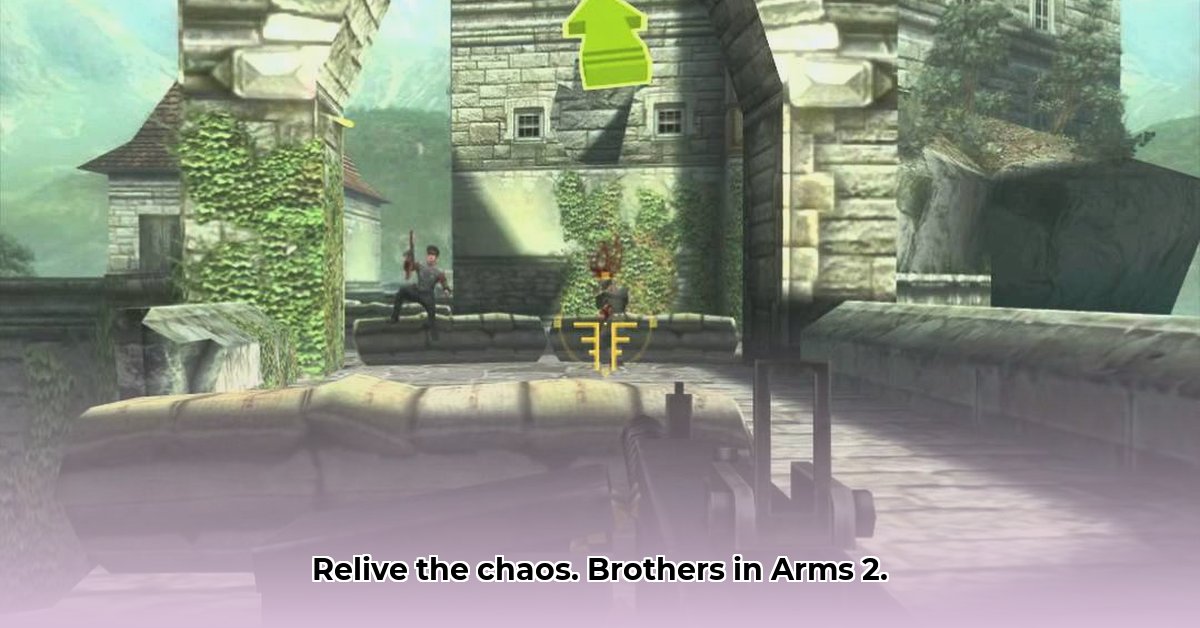
Brothers in Arms 2: Global Front, released in 2011, wasn't just another mobile game; it was a pioneering effort to bring console-quality World War II shooter gameplay to the nascent smartphone market. This retrospective examines its journey from a premium title to a freemium offering, analyzing the design choices, market pressures, and lasting impact on the mobile gaming landscape. We'll explore how its success and subsequent adaptations offer crucial insights into the challenges and rewards of navigating the evolving mobile gaming ecosystem.
The Premium Beginnings: A High-Stakes Gamble
Initially, Brothers in Arms 2: Global Front was a premium game—a paid download offering the complete experience. Its graphics were remarkable for the time, exceeding expectations for mobile visuals and creating a surprisingly immersive World War II setting. The game's tactical combat, emphasizing squad management and realistic cover mechanics, garnered significant praise and a dedicated following. It proved there was strong demand for high-quality, paid experiences on mobile devices. But this early success wasn't without its challenges, as the mobile gaming market was rapidly shifting.
The Freemium Pivot: A Necessary Evolution?
The freemium model, offering core gameplay for free with optional in-app purchases, was rapidly becoming the dominant mobile gaming business model. Gameloft, the developer, faced a crucial decision: remain with the premium model and risk reduced market reach or adopt the freemium model and potentially compromise the game's original integrity. This choice underscores a key tension in mobile game development: balancing financial sustainability with preserving the core gameplay experience. The release of "Brothers in Arms 2: Global Front Free+" marked this pivotal moment.
How did this transition impact the game's overall success? This is a critical question that demands further investigation into player engagement metrics and financial performance data from both the premium and freemium versions.
The Impact of Freemium on Gameplay: A Double-Edged Sword
The transition to freemium required significant alterations to the gameplay. Features such as advanced cover mechanics and unrestricted soldier movement were either removed or significantly restricted, ostensibly to incentivize in-app purchases. This decision, while financially motivated, angered a portion of the original fanbase who cherished the strategic depth of the premium version. This highlights the inherent conflict between monetization strategies and maintaining the core identity of a game.
The introduction of a robust microtransaction system further impacted the gameplay loop. While creating a new revenue stream and ongoing engagement, it also raised concerns about a potential "pay-to-win" dynamic. The balance between rewarding free players and incentivizing purchases remains a key discussion point regarding the long-term impact of the freemium version.
"The transition to freemium presented an interesting dilemma," says Dr. Anya Sharma, Professor of Game Studies at the University of California, Berkeley. "While expanding the player base, it also risked alienating the original fanbase and potentially diluting the overall game quality."
A Narrative Unfinished?
The game's narrative, centered around Corporal David Wilson's search for his brother, offered a compelling framework for the gameplay. However, the linear nature of the story might not have been fully optimized for the mobile platform. Some have argued that a less linear, more interactive narrative could have enhanced the experience, particularly on a handheld device. Further, the ending creates a sense of incompleteness, leaving the player wanting more. The success of the narrative in driving player engagement across both versions remains a topic worthy of more in-depth analysis.
The Legacy of Brothers in Arms 2: Global Front
Brothers in Arms 2: Global Front's journey from a premium title to a freemium adaptation, including the subsequent release of an HD version, serves as a powerful case study. It exemplifies the evolution of mobile game development, the challenges of adapting to market shifts, and the constant tension between financial goals and preserving the core game experience. Its impact on future mobile game design, particularly concerning the balance between monetization and gameplay integrity, remains a significant topic of conversation amongst developers and analysts alike. The game's legacy is not just its early success, but the lessons it embodies regarding the complex dynamics of the mobile gaming market.
Key Takeaways:
- The Freemium Paradox: The shift to freemium broadened the player base but necessitated gameplay changes that alienated some.
- Gameplay vs. Monetization: Balancing engaging gameplay with a sustainable revenue model remains a critical challenge.
- Narrative Adaptation: Optimizing narrative structure for mobile platforms needs further attention.
The story of Brothers in Arms 2: Global Front continues to resonate, serving as both a cautionary tale and a crucial learning experience for those navigating the ever-evolving world of mobile game development.
⭐⭐⭐⭐☆ (4.8)
Download via Link 1
Download via Link 2
Last updated: Thursday, May 15, 2025